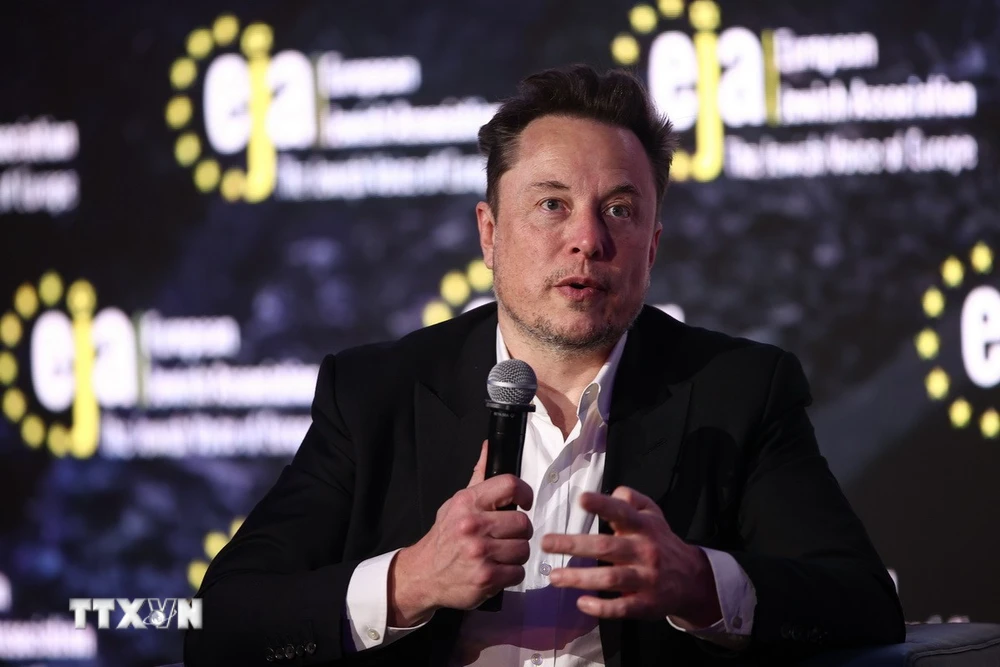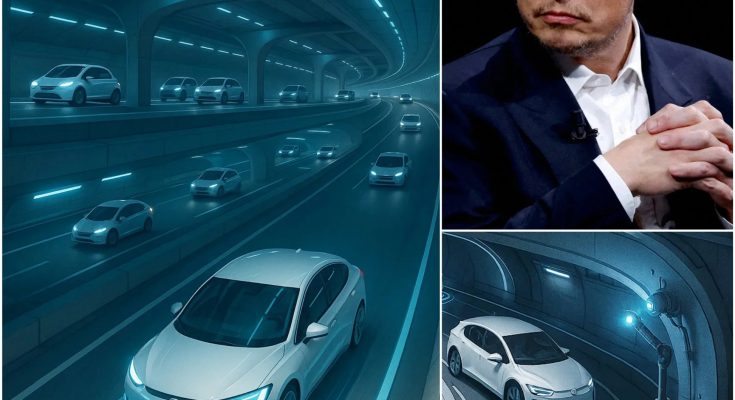Imagine a future where traffic jams are a thing of the past, where your electric vehicle never runs out of charge on the road, and where transportation infrastructure works tirelessly around the clock to deliver seamless, clean, and ultra-efficient travel. This future is no longer a distant dream. It’s here — and it’s called the Smart Tunnel.
Revolutionizing Urban Mobility with AI and Robotics
The Smart Tunnel is a groundbreaking infrastructure innovation designed to tackle some of the most persistent problems facing modern cities: traffic congestion, pollution, and the limitations of electric vehicle (EV) charging. Conceived and spearheaded by visionary entrepreneurs and engineers inspired by Elon Musk’s transformative approach to transportation, this multi-level tunnel system blends artificial intelligence, robotics, and wireless power transfer technologies into an integrated transportation marvel.
Unlike traditional tunnels or highways, the Smart Tunnel is fully automated. It uses AI-powered traffic management systems that analyze real-time traffic flow, vehicle density, and environmental conditions to dynamically adjust vehicle routing and speeds. The tunnel employs robotic traffic controllers that actively manage lanes, direct vehicles smoothly, and prevent bottlenecks before they even occur. This proactive approach drastically reduces traffic jams, improving travel times dramatically.
Multi-Level Design for Maximum Efficiency
One of the Smart Tunnel’s most innovative features is its multi-level architecture. Unlike conventional roads that spread outward, this system stacks multiple travel lanes vertically underground, drastically increasing the capacity of transportation corridors without consuming additional surface space. This is a game changer for densely populated urban areas where land is scarce and expensive.

Each level within the Smart Tunnel is dedicated to specific vehicle types or traffic flows. For example, one level might be optimized for private EVs, while another prioritizes public transit or freight vehicles. This specialization allows the tunnel to tailor traffic conditions, speeds, and charging needs for different users, maximizing safety and efficiency for all.
Continuous Wireless Charging — Never Stop to Recharge Again
Charging anxiety remains one of the biggest obstacles to widespread EV adoption. But the Smart Tunnel directly solves this problem with state-of-the-art wireless charging embedded seamlessly into its lanes. As EVs travel through the tunnel, they receive continuous inductive charging — no need to stop at charging stations or plug in cables.
This breakthrough technology means electric vehicles can run farther and longer, even during rush hours, without worrying about battery depletion. The wireless charging system is powered sustainably, using renewable energy sources like solar and wind, making the entire transportation system greener and more environmentally friendly.
24/7 Operation: The Future of Non-Stop Travel
Traditional roadways are limited by maintenance schedules, accidents, and traffic disruptions. The Smart Tunnel, however, is designed to operate 24 hours a day, seven days a week, without pause. Its robotic maintenance crews perform repairs and cleaning autonomously during low-traffic hours, ensuring safety and uninterrupted service.

With continuous operation, the tunnel supports not only daily commuters but also freight logistics and emergency services around the clock. This means cities can count on reliable transportation infrastructure at all hours, reducing delays and boosting economic productivity.
Cleaner Cities and Healthier Communities
Traffic congestion and vehicle emissions contribute significantly to air pollution, noise, and health hazards in urban centers. By streamlining traffic flow and encouraging electric vehicle use, the Smart Tunnel dramatically cuts emissions and noise pollution. Its underground location further isolates traffic noise and exhaust fumes from city streets, making neighborhoods quieter and healthier.
The wireless charging powered by renewable energy means the Smart Tunnel is more than just a transportation system — it’s a bold step toward sustainable urban living and combating climate change.
Challenges and the Road Ahead
While the Smart Tunnel offers extraordinary promise, deploying such a complex system on a large scale presents challenges. The upfront costs for tunneling, AI infrastructure, and robotics are substantial. Integration with existing road networks and regulatory approvals will require careful planning and cooperation between governments, tech companies, and urban planners.
However, early pilot projects have shown impressive results, with reduced commute times, increased EV usage, and positive environmental impacts. As technology costs fall and public support grows, widespread adoption of Smart Tunnels seems inevitable.

Are You Ready for Elon’s Smart Transportation Era?
Elon Musk revolutionized electric cars with Tesla, reshaped space travel with SpaceX, and proposed visionary high-speed travel concepts like the Hyperloop. The Smart Tunnel represents the next frontier — a future where cities are cleaner, traffic jams disappear, and transportation systems operate with unprecedented intelligence and efficiency.
As cities grapple with rapid population growth and climate change, innovations like the Smart Tunnel are no longer luxuries but necessities. The age of smart transportation powered by AI, robotics, and sustainable energy is dawning. Are you ready to step into this future and experience faster, cleaner, and smarter travel like never before?



